Day 15: August 16th
We stopped at a bistro on Front Street in the heart of Dawson City to grab coffee before setting off on our journey to Alaska via the Top of the World Highway. The bistro was bustling with people, and we ordered coffee and a burrito wrap before sitting down at our table. A young girl of North Indian origin, who now lives in Ontario, struck up a conversation with us, mentioning that many people come to Dawson City as seasonal workers.
The café was crowded, and we noticed that many of the patrons were speaking German. Someone nearby joked about whether anyone was left in Germany or if they had all come to Dawson City. Another person chimed in, saying they had hoped to escape Germans on their vacation. The Swiss man we met on the Klondike Highway would surely have said: “Deutsche, Deutsche, zu viele Deutsche.”
Feeling like we had enough of city life, we started our new journey to Alaska. A ferry took us across the Yukon River to West Dawson City. As we began driving the Top of the World Highway, we passed a golf course before the road quickly turned into a dusty, winding dirt track, reminiscent of the Dempster Highway. Despite its name, the highway is not on top of the world; instead, it was surrounded by mountains and valleys, giving the impression that we were looking down from the top of the world.
The road conditions were far from ideal—bumpy and winding with sharp curves and steep inclines. At times, the valleys on the right side of the road plunged down for kilometres, and when our car slipped on the gravel, the thrill rivalled any rollercoaster ride, especially with no guardrails in sight. Although the scenery was stunning, we kept our eyes mostly on the road.
After a long drive covering only a short distance, we reached the border. There, we met two German bikers who had shipped their bikes to Chile and were riding across the Americas. The border officer mentioned that they let in an average of about 200 Germans daily.
The drive improved significantly once we crossed into Alaska. We arrived in Chicken for a fuel and coffee stop at the RV park at the entrance of the town, and guess who we ran into again? That’s right—the man from Munich. He hadn’t made it to the border the previous night as it closed at 7:00 PM, so he spent the night on the Top of the World Highway. He was heading to Anchorage to pick up his son, who was flying in from Germany, and they planned to travel together to Mexico. We bid each other farewell, knowing we’d be driving in opposite directions once we reached the Alaskan Highway.
At the gas station, we found the pumps padlocked, but an old man in his late seventies, with a white beard and a “Viet Veteran” cap, approached us. He told us that he lives in Utah and comes to Alaska during the summer to help his daughter manage the RV park. He mentioned that his time in Vietnam was rough.
Chicken was a charming place to spend time. We enjoyed warm showers, café lattes, and sandwiches. I took a photo in front of the chicken statue wearing a t-shirt featuring our own three chickens, a gift from a lovely friend at work. Before leaving, we spotted the post office and drove down a small lane to a house adorned with dozens of colourful flowers and plants—a little garden paradise. The woman who greeted us was delighted when we told her it was the most beautiful post office in the world. She handed us a chicken toy to hold in front of it and took our picture. Everyone in Chicken seemed relaxed and had time for a chat, a stark contrast to the bustling atmosphere of Dawson City.
We continued our drive and stopped at Tok, located directly on the Alaskan Highway, a few kilometres west of where the extension of Top of the World Highway ends. We stayed at one of the campgrounds and went to Fast Eddy’s restaurant for dinner. As we sat down and ordered an appetizer and beer to start, a man in his late sixties greeted us with “Guten Appetit.” We recognized him from Dawson City, where we had seen him and his German tour group waiting in line at the casino.
The nachos we ordered, baked with cheese, jalapeños, beans, and beef, were meant as an appetizer for one, but they were more than enough for both of us. The waitress mentioned that people often order an appetizer, main course, and dessert, but rarely manage to finish everything. We looked around and noticed that the average weight of the customers was likely around 100kg.
We had a quiet spot at the campground and enjoyed a good night’s sleep.
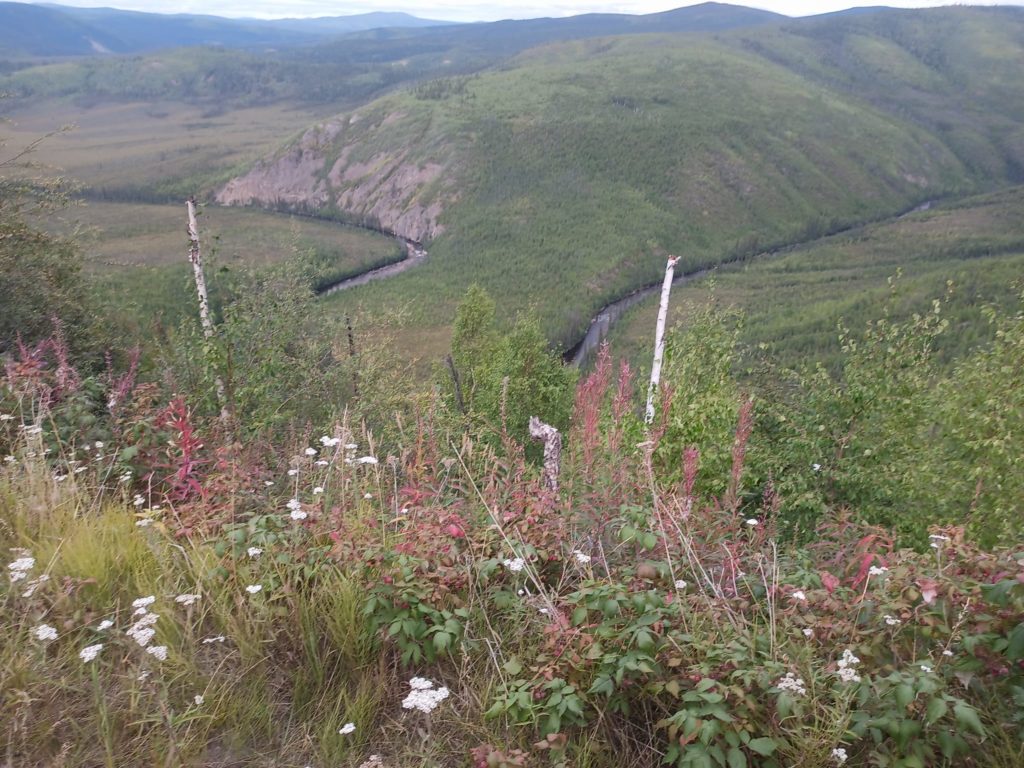
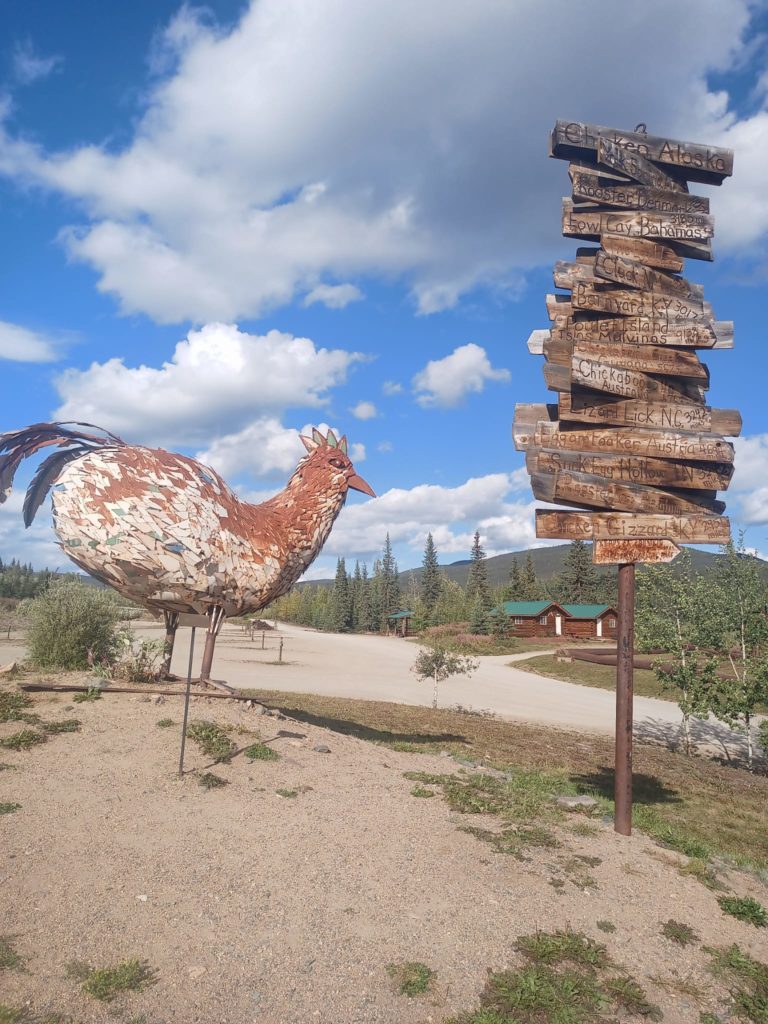


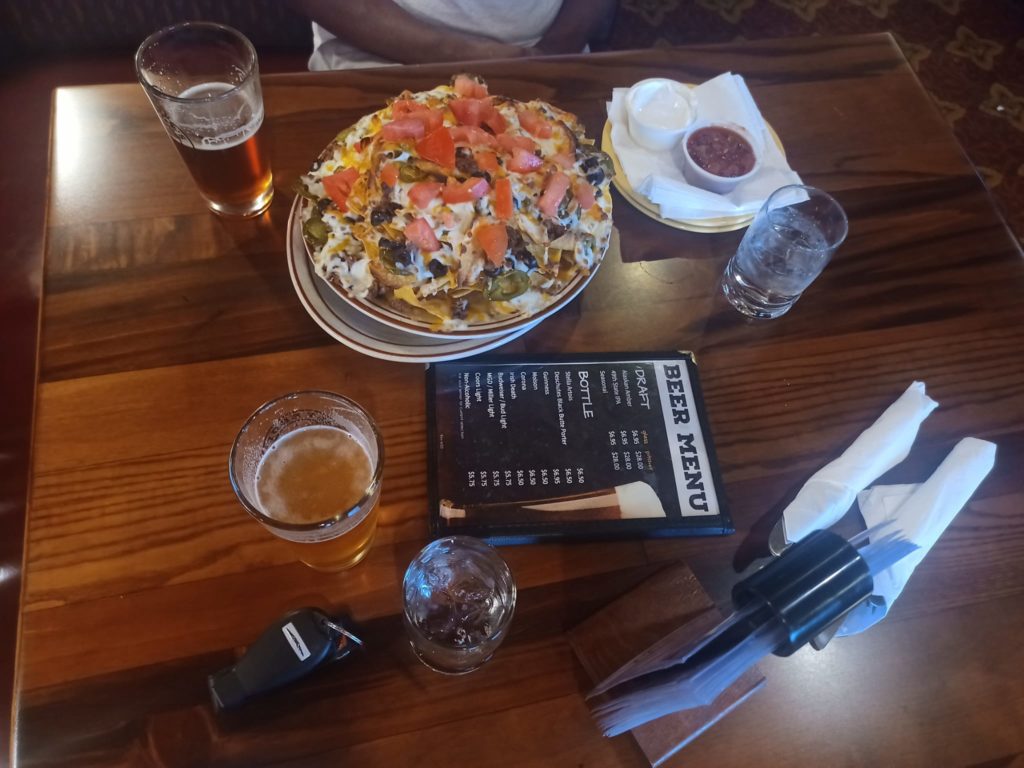
Day 16: August 17th
We started our day leisurely with café lattes and breakfast in Tok. Before leaving Dawson City, we had already stocked our cooler with fresh food and ice packs. The washrooms at the facility were pristine, and the spacious laundry room was a welcome bonus. The car wash was particularly useful; our car desperately needed a clean after the dusty roads we’d travelled.
The drive on the Alaskan Highway toward Canada was as scenic as, if not better than, the journey from Canada to Alaska. With our mission to Tuktoyaktuk accomplished, we had shifted into vacation mode. We enjoyed the freedom to drive when we felt like it, stop where we wanted, and rest as needed. We were no longer bound by any clock but our own, with only our reliance on the car as a constraint.
About 50 kilometres into our drive, the malfunction light came on again, pulling us out of vacation mode and back into alert mode. We stopped at a rest area to cool down the engine and add some water. A man, accompanied by his two young sons and a German Shepherd, was cleaning his trailer. As usual, the dog eagerly approached us for some pats. The man, a US Air Force officer residing in Whitehorse with dual US-Canadian citizenship, suggested that the malfunction light could be due to a low coolant level, which was our suspicion as well. We added coolant and then faced a decision: return to Tok, continue our journey to Haines, or head toward Whitehorse.
We decided to forge ahead. The scenery was breathtaking, and we frequently stopped to take in the panoramic views from the mountain tops—lakes, rivers, short green pine trees, a mix of red and icy mountain peaks, yellow aspen leaves, and purple Yukon flowers created a magical landscape.
We made a stop at Deadman Lake campground, which offered free camping, split firewood, and canoes. We took a canoe out onto the lake, enjoying the shimmering waves in the sunlight. The tranquillity of the location, the bright sun peeking through white clouds, and the majestic hills were a perfect escape from our worries. We resolved to return to such a serene campground in the future.
When we started the car again, the reality hit us: the engine warning light was still on. We kept adding water to the cooler, but we couldn’t find more coolant.
Shortly after crossing the Canadian border, we stopped at Beaver Creek and inquired about local mechanics. The gas station staff provided us with a contact number, but we only reached voicemail. Unsure of our next steps, we restarted the engine and were relieved to find the warning light off.
With a sense of relief, we continued driving until we reached Snug, where we spotted a quiet campground by a beautiful lake. Unable to resist the temptation, we decided to stay. We secured a spot right by the lake, enjoyed a dinner with a glass of red wine, and then retired for the night.
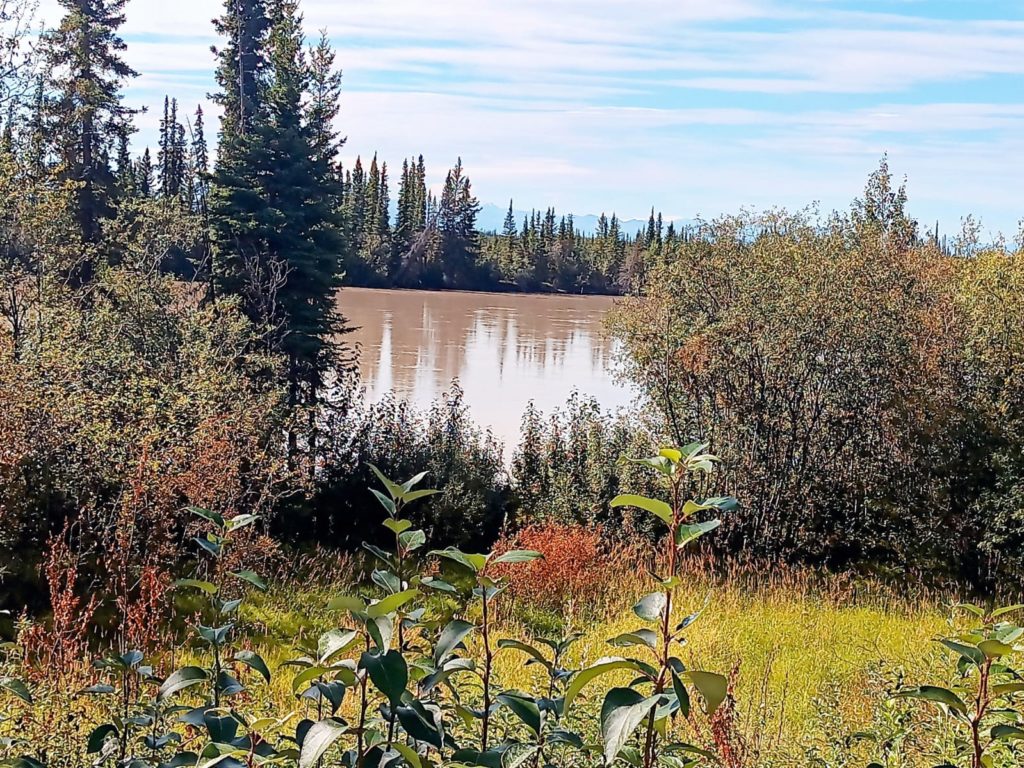
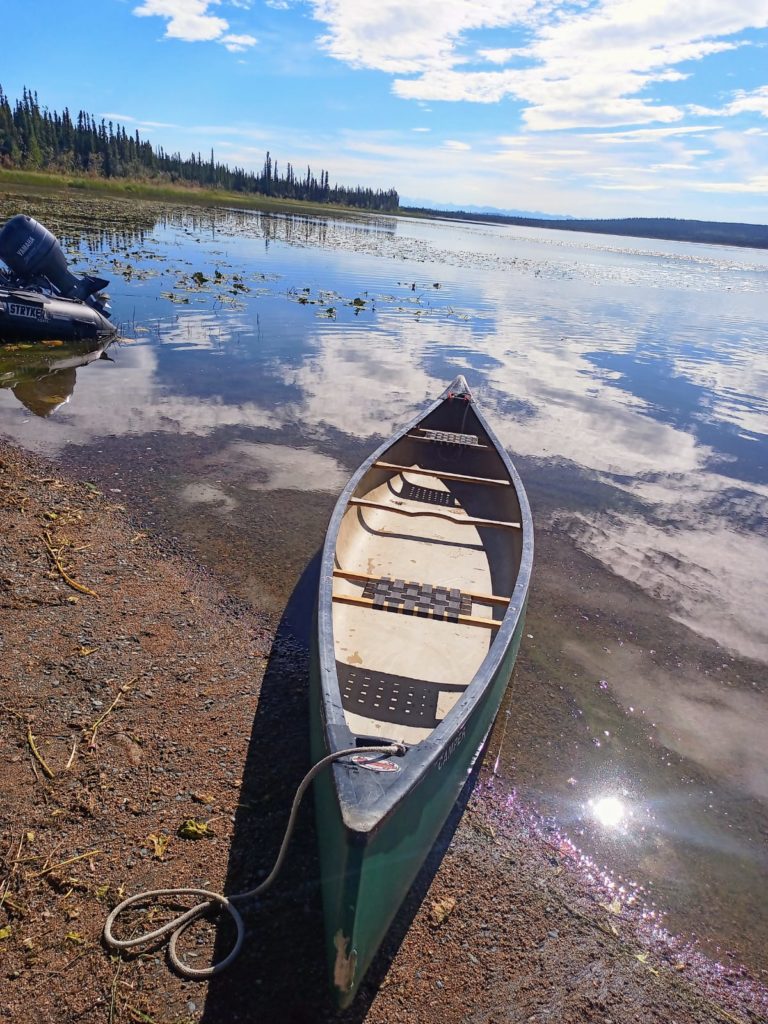

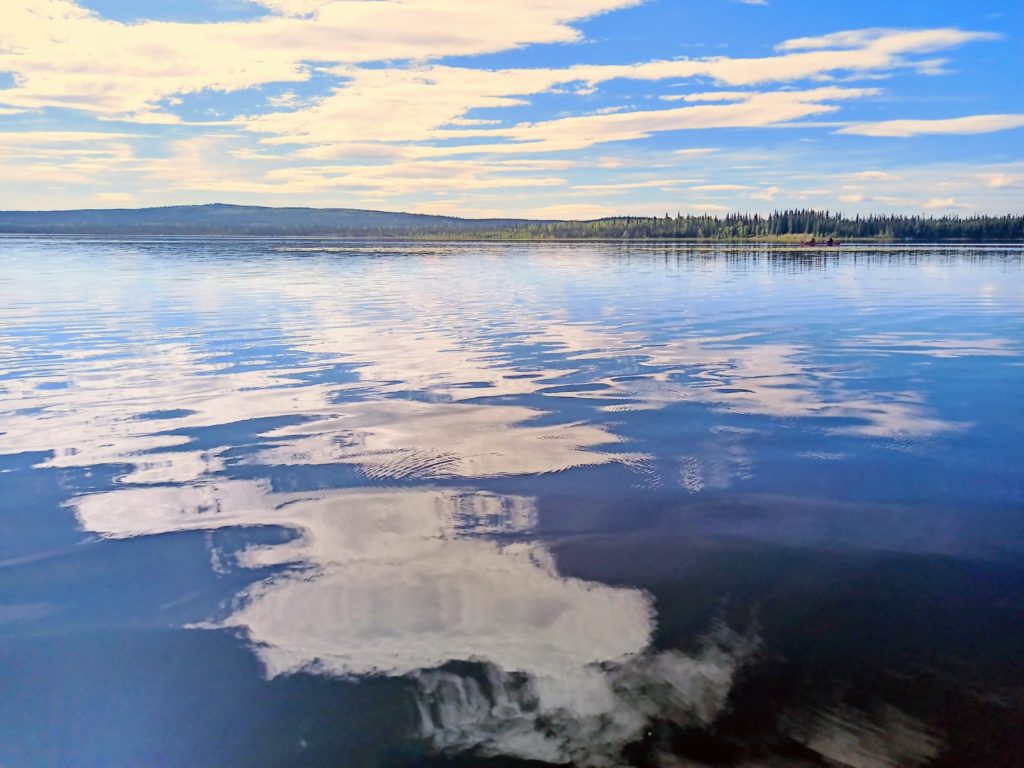
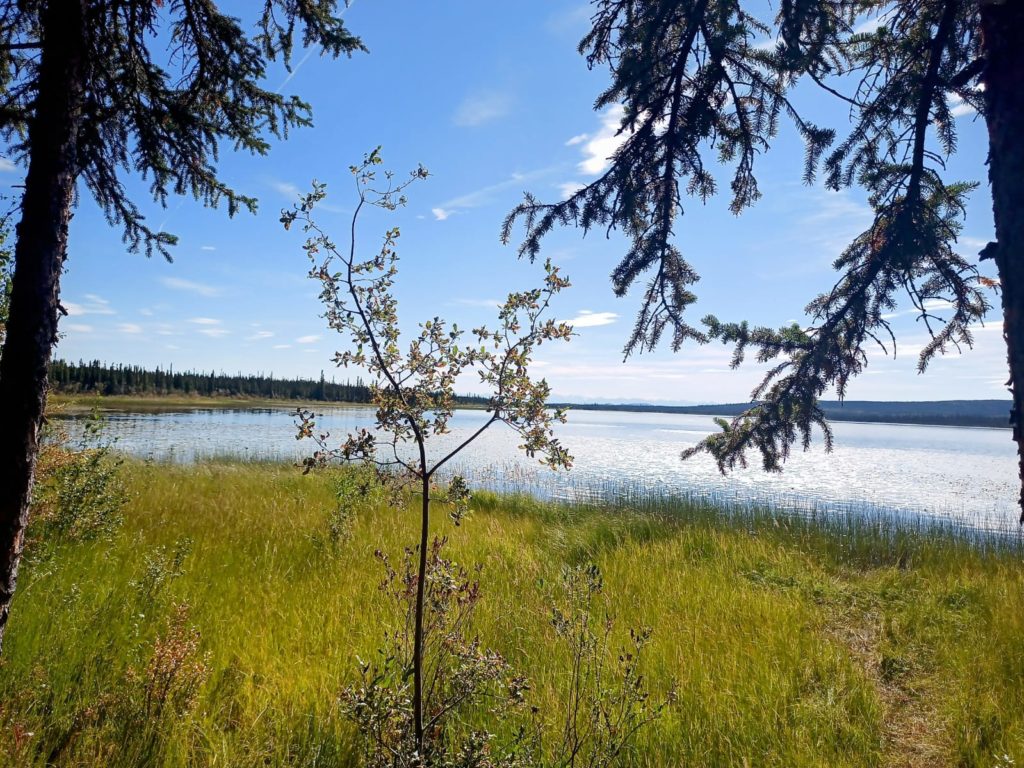
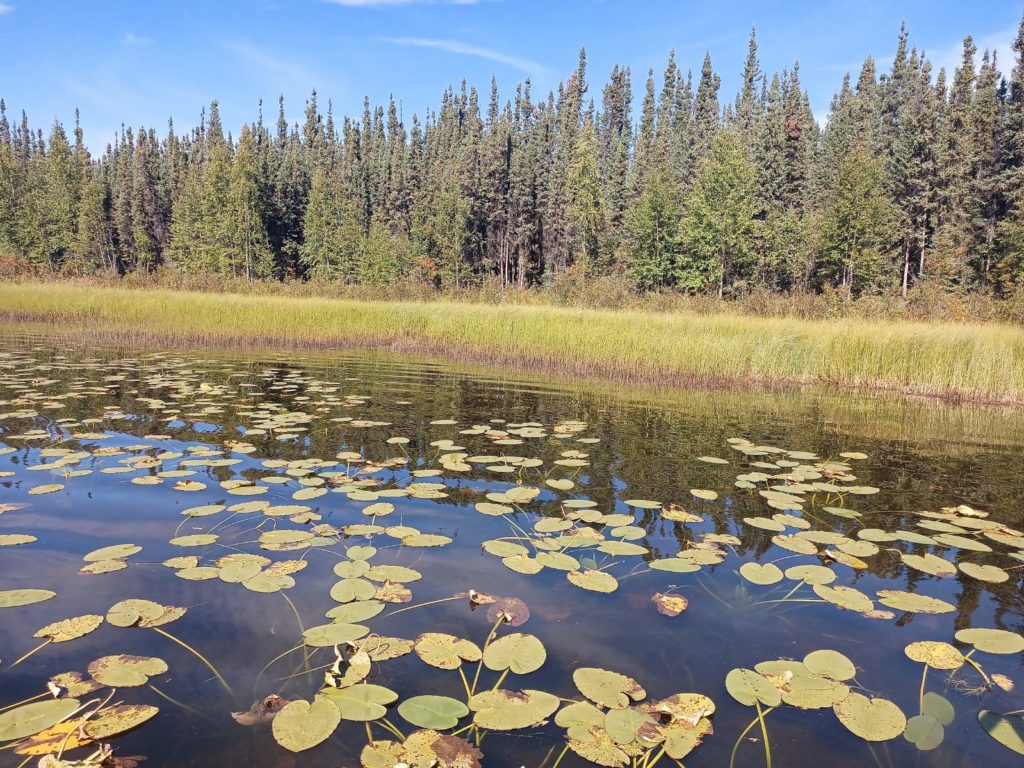
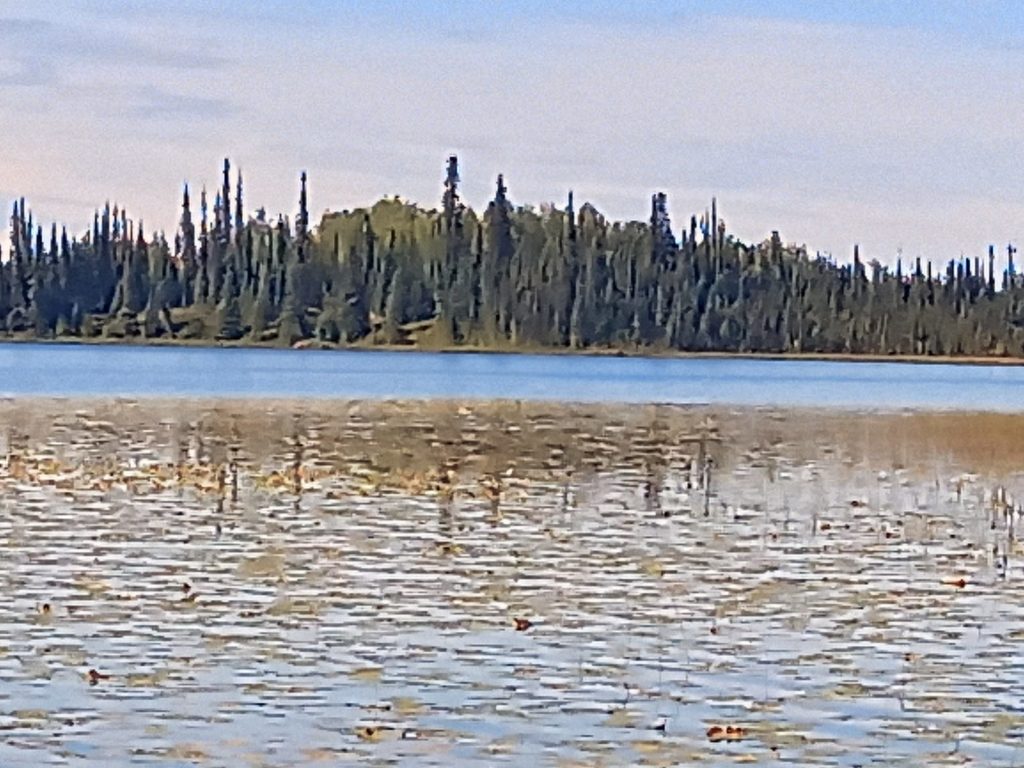

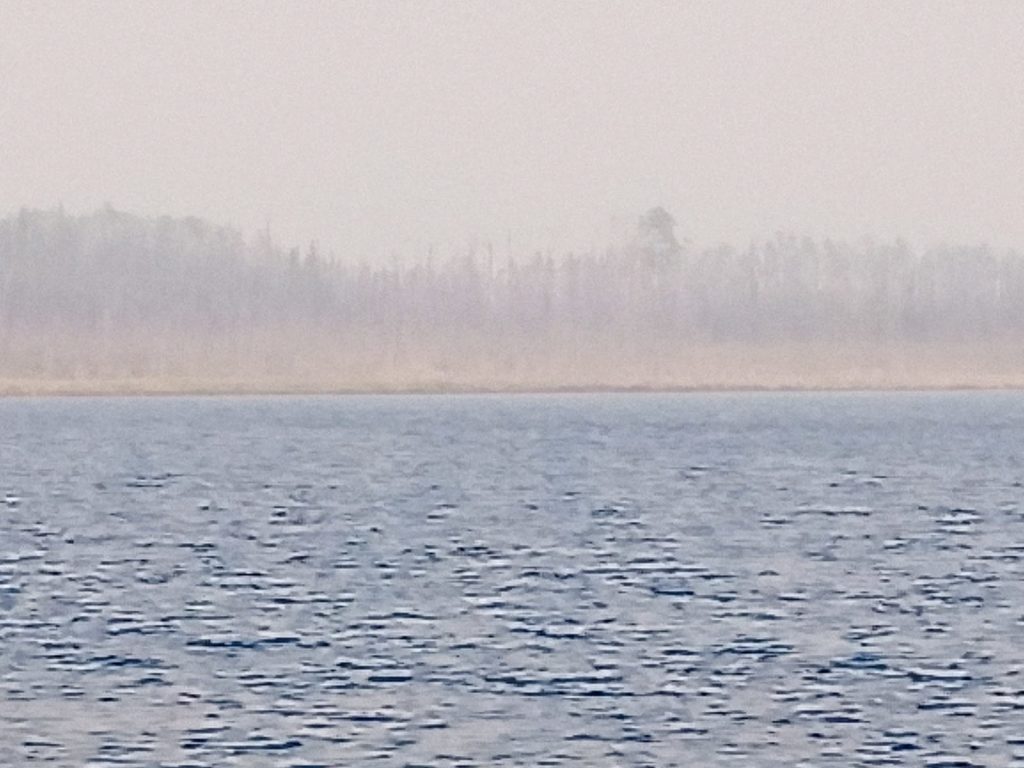
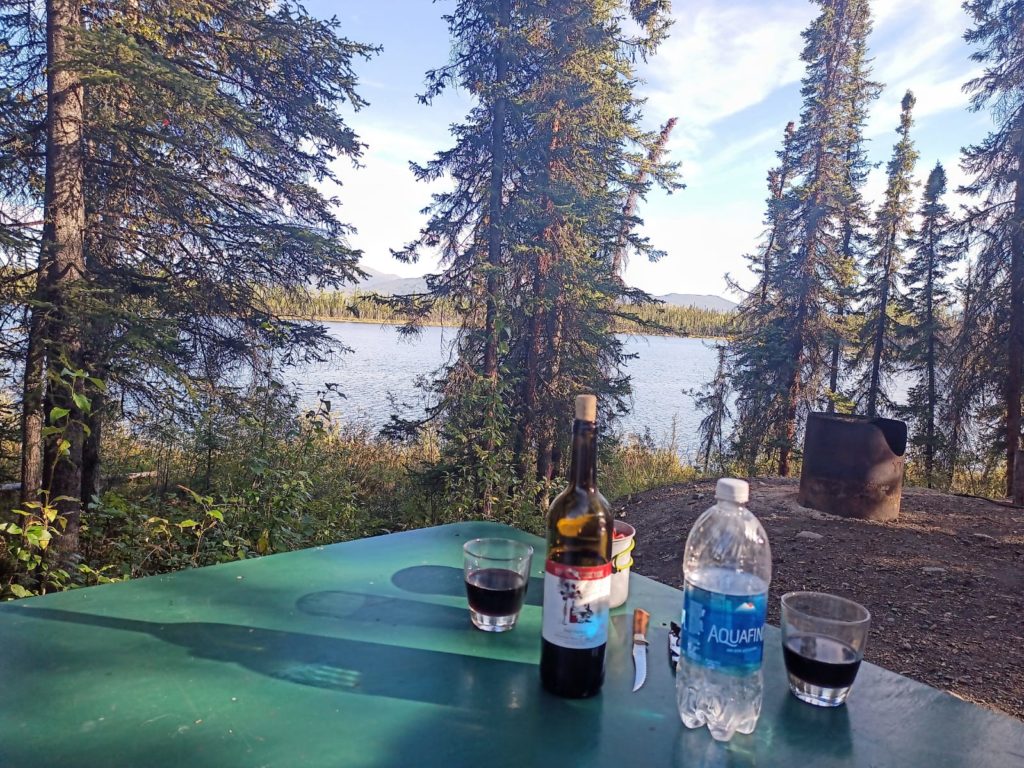
Day 17: August 18th
When we woke up, the sun was shining brightly, and the lake beckoned us for a morning plunge. To our surprise, the water wasn’t cold at all, so we dived right in. After a hearty breakfast with café lattes, we started our day, planning to drive towards Haines, Alaska, at our own pace. Unlike the smooth, paved Alaskan Highway, the road in Yukon was bumpy, unpaved, and full of hidden potholes. But we didn’t mind; the stunning scenery kept us stopping every few miles to take pictures and share stories about our journey—until the engine warning light suddenly came on.
Almost certain that it was a coolant issue, we ruled out the possibility of a malfunctioning sensor caused by dust. We found a mechanic in Destruction Bay and called him from a gas station with cell service, letting him know we were on our way. The garage was located beside the highway in the Kluane First Nations reserve, nestled between Kluane Lake on one side and mountains on the other. It had two garage sheds, a small house, a garden house, and a storehouse. Music played from a radio, but no one was around. After searching the open premises, we headed to a nearby gas station to see if they had coolant.
The gas station was run by North Indian staff, and they had everything we needed. As we approached the counter, a young family with two children greeted us, saying, “We’re also from Berlin!” We were both wearing “Berlin” T-shirts, a gift from my daughter who visited us from Berlin a month ago. The family had just finished their meal in the restaurant attached to the gas station. We grabbed some chilli and a döner wrap before heading back to check on the mechanic.
This time, two elderly men were removing a spare tire from a car. They listened to our problem and handed us an antifreeze tester to check the coolant-to-water ratio. After a few adjustments, the older man was satisfied with the result and asked us to start the engine. The warning light was still on. He then suggested disconnecting the battery to reset the system. While we waited for about ten minutes, we had a small chat. The taller man had visited Germany many years ago. After reconnecting the battery, the light was off. We were relieved and grateful to the men. They were competent, efficient, and friendly, and although they solved our problem, they asked for nothing in return, taking only what we offered. It’s a rare custom we only see in remote areas.
With the engine light off and our car running smoothly after fixing the exhaust in Dawson City, we hoped it would stay that way. We didn’t want anything to disrupt our vacation. As we continued driving south along the Alaskan Highway, Kluane Lake accompanied us for miles on our left. The shoreline varied—rocky in some places, dry with sand dunes in others, with whirling winds lifting dust above the water’s surface. It was a magical moment, and the lake seemed to call out to us. We pulled over on a side road between the highway and the lake, where a big RV was already parked. A man sat in one chair while a woman stood beside another. As we approached to greet them, we noticed a large Persian cat perched on the chair, ignoring us completely. The man chuckled, “She’s my queen,” but we had already figured that out. They pointed us to a rocky spot where people had been swimming earlier.
We walked down to the lake, finding a secluded spot surrounded by rocks with a clear path to the water. The water was chilly but refreshing. We dipped several times, feeling as invigorated as if we’d downed a litre of Red Bull. We took our time sunbathing and soaking in the breathtaking view. When we returned to the car, the couple was still sitting in their chairs, though Her Majesty had retreated inside. “Too cold for her,” the man said, probably referring to a cozy velvet bed with a cashmere blanket. The couple had been travelling in their RV from California for the past three weeks. We recognized their hometown from our Southeast US road trip; it’s located between Los Angeles and San Francisco. We exchanged stories about the places we had both visited, including Yosemite, Death Valley, Bryce Canyon, and the Grand Canyon. They were commercial fishermen who once fished along the North Pacific coast from California to British Columbia and Alaska. Now in their early seventies, they spend more time in their RV than at home.
It was late afternoon when we hit the road again, heading towards Haines, Alaska, through British Columbia. As we left the Alaskan Highway at Haines Junction and took Highway 3, the landscape of mountains and lakes unfolded before us. The sun bathed the ice-capped peaks in golden light, while clouds drifted slowly along their lower slopes. The road was in excellent condition, and we were almost the only car on it. We drove at our own pace, stopping at several points to take in the views, which reminded me of the Alps I had climbed long ago. By the time we arrived at the empty US border, it was late evening. An officer emerged from a nearby building, greeted us with a friendly, “Huh, Germans,” and after checking our visas, wished us a good time in Haines.
The drive from the border to Haines grew more scenic as it got darker. We didn’t stop to take photos, focusing instead on where we would stay overnight. A giant red moon magically appeared between the mountains and the brightly illuminated Kluane River. It was the crown jewel of the day.
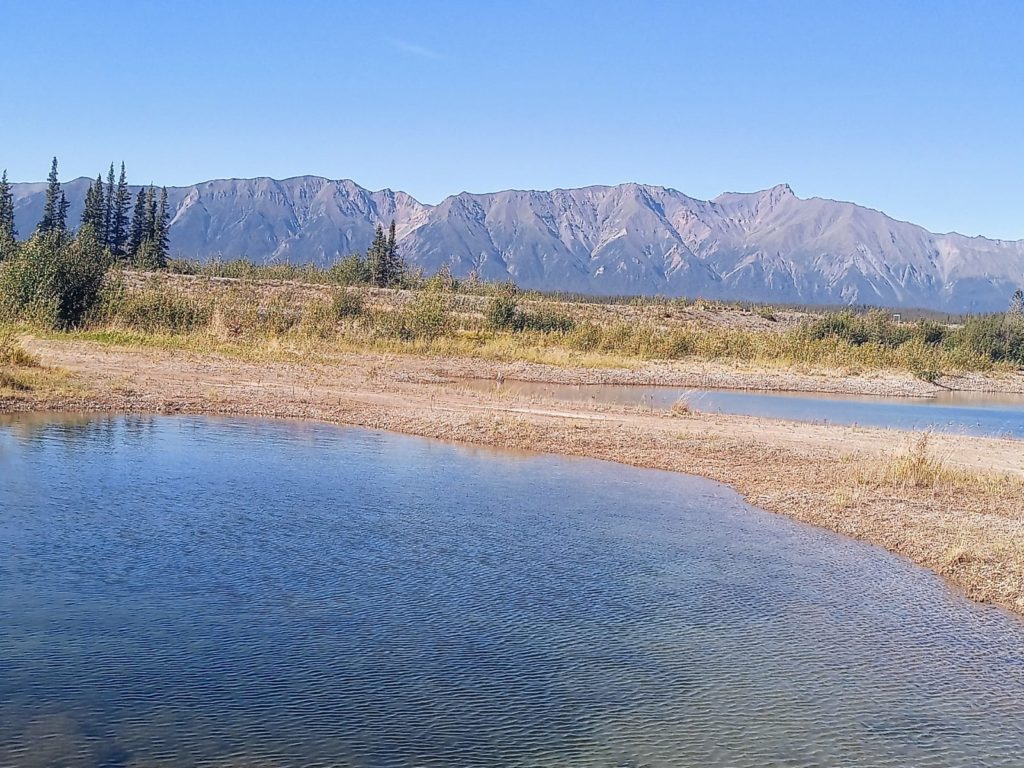
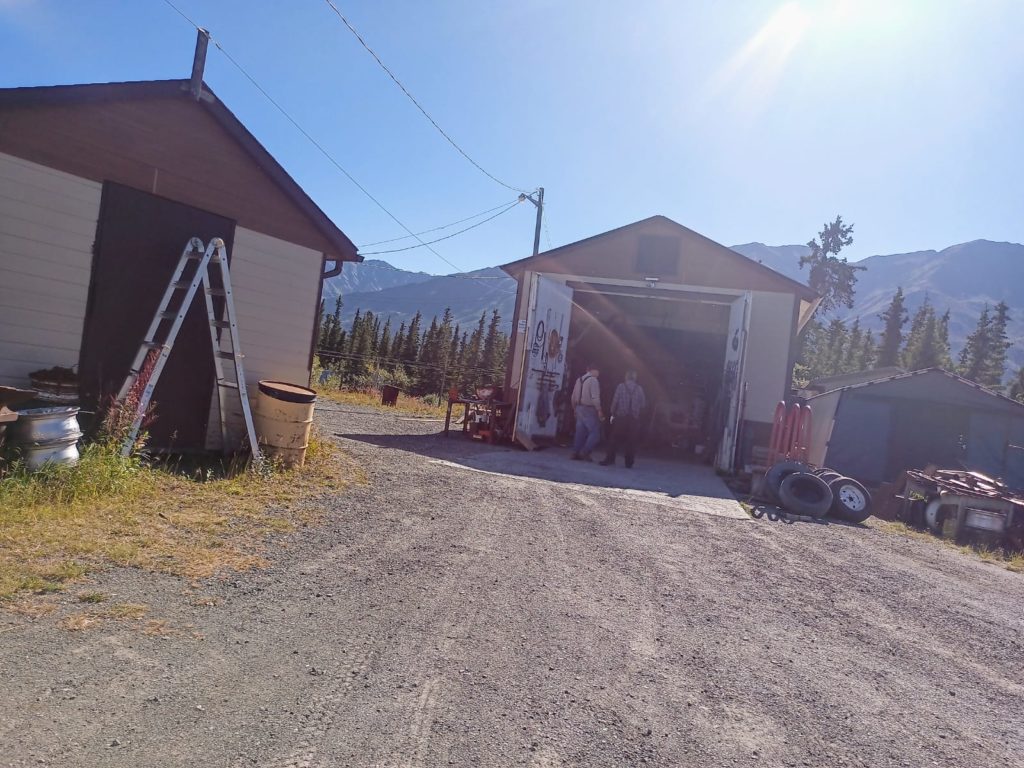
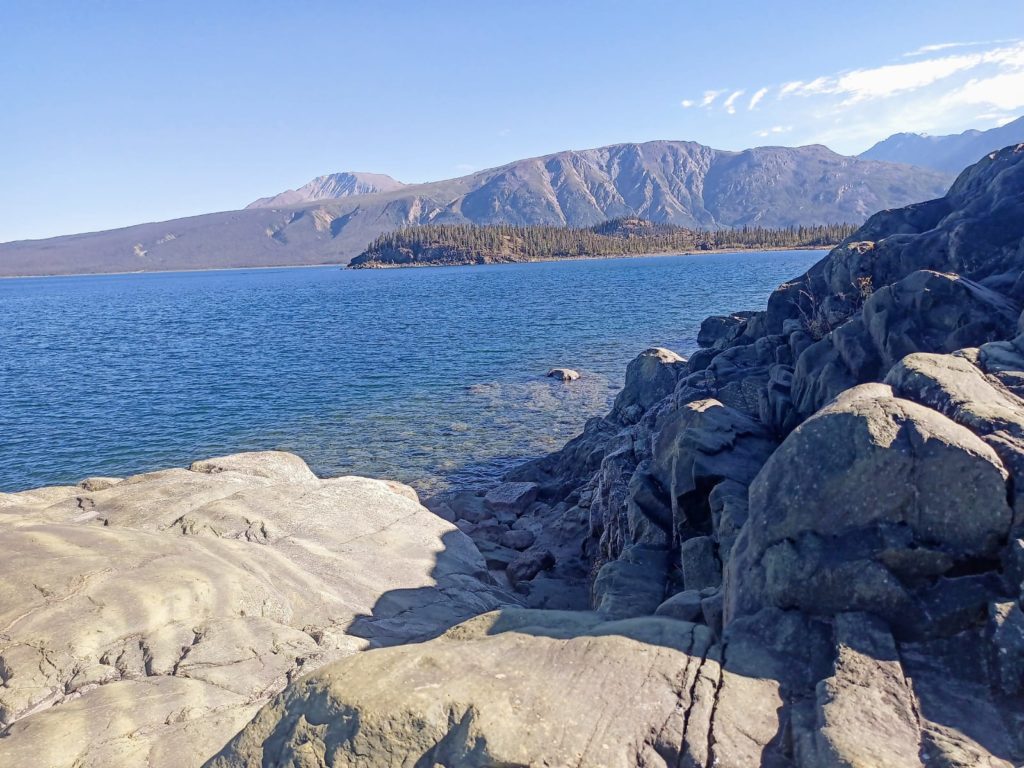
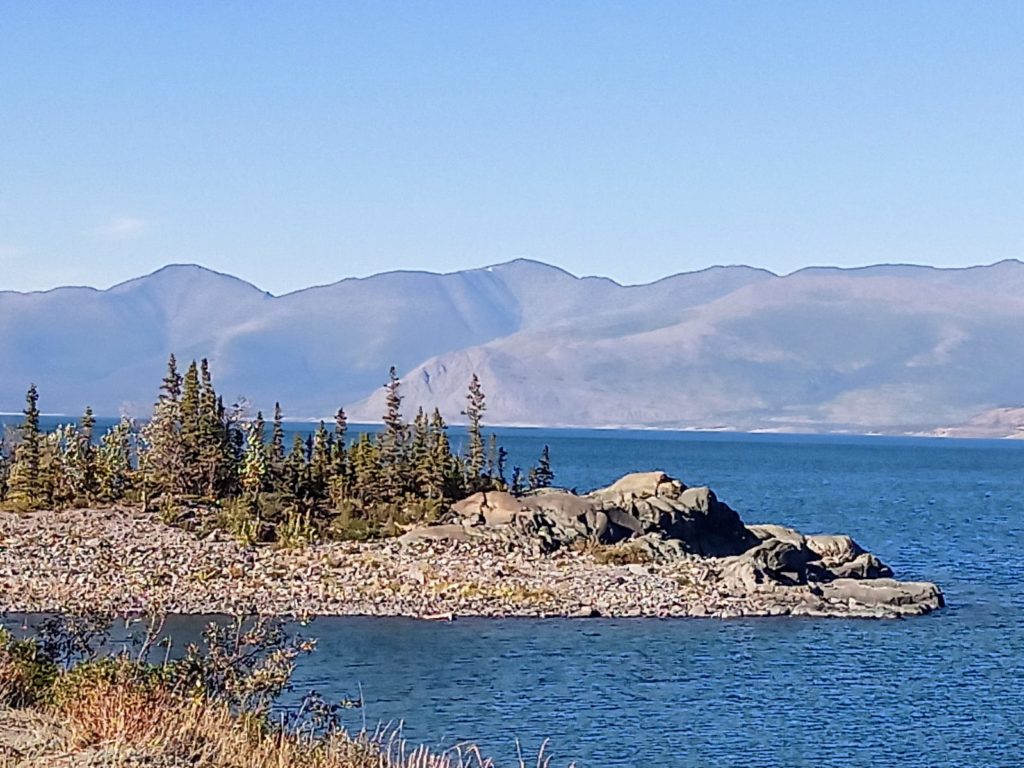
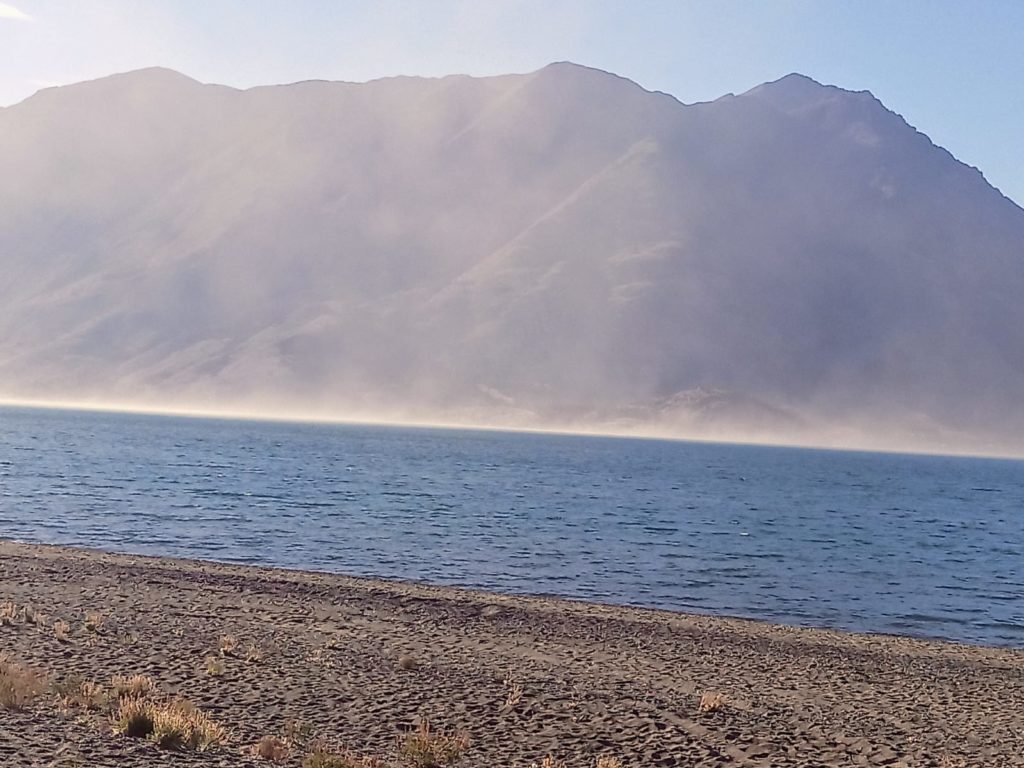
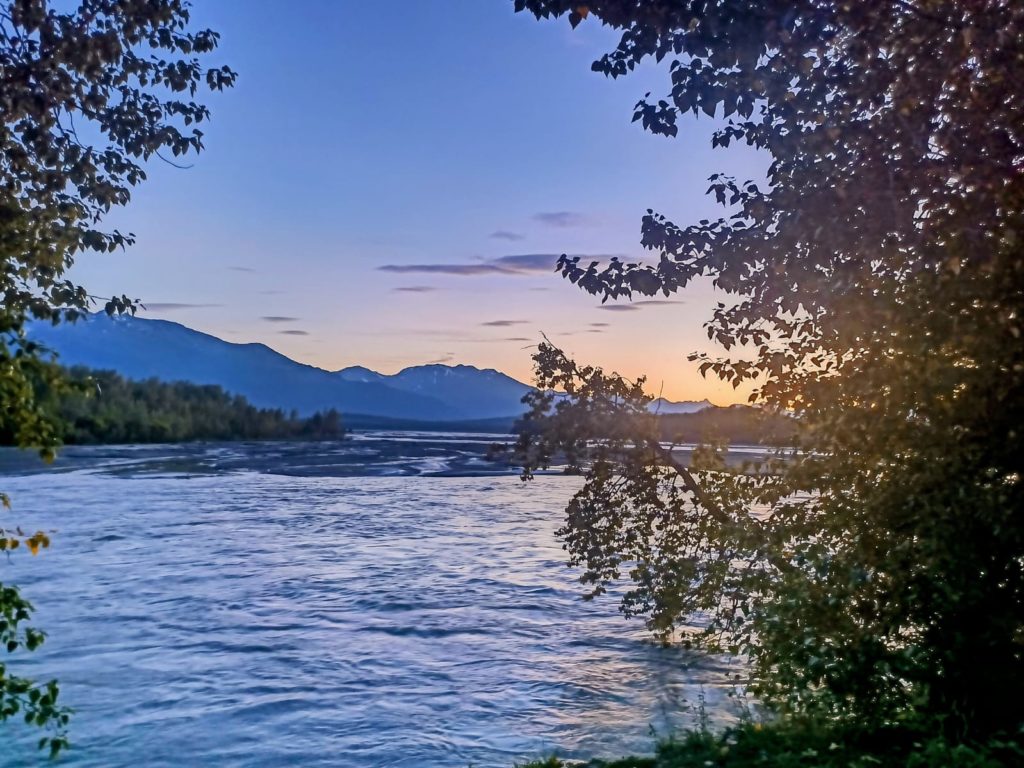
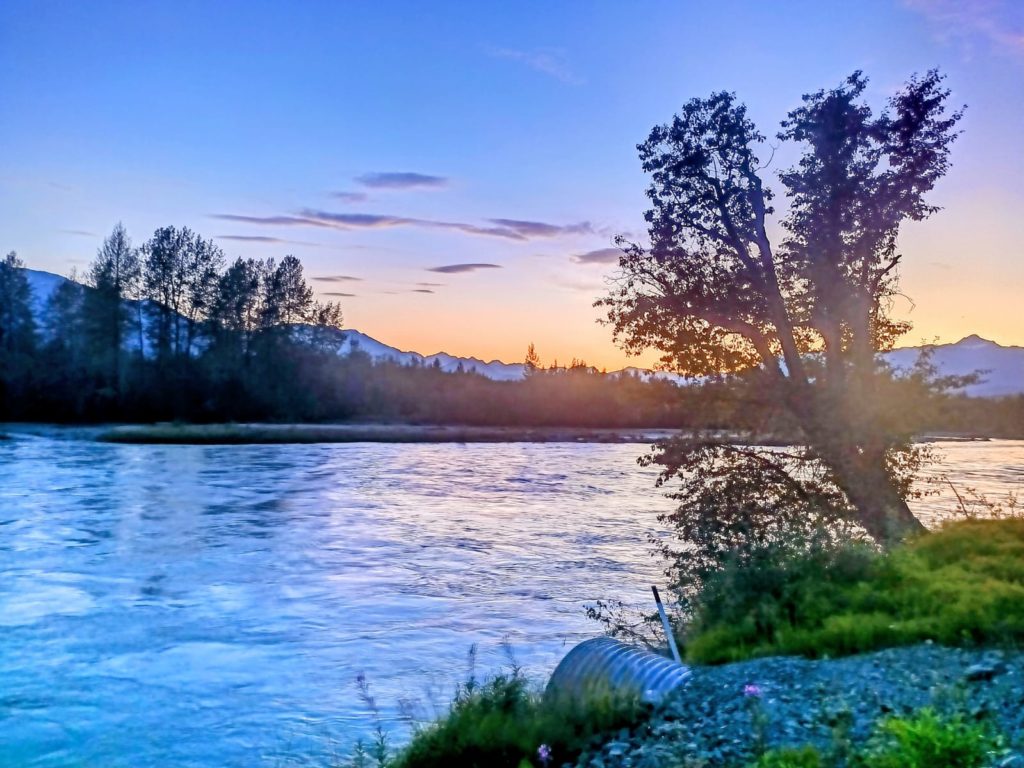
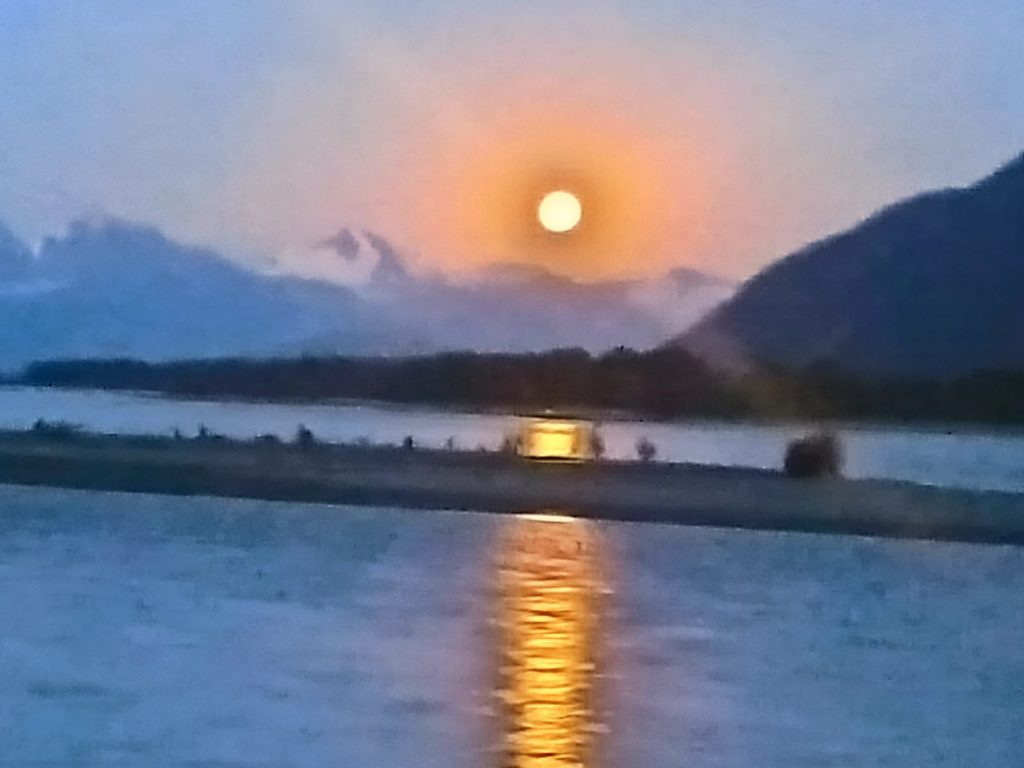

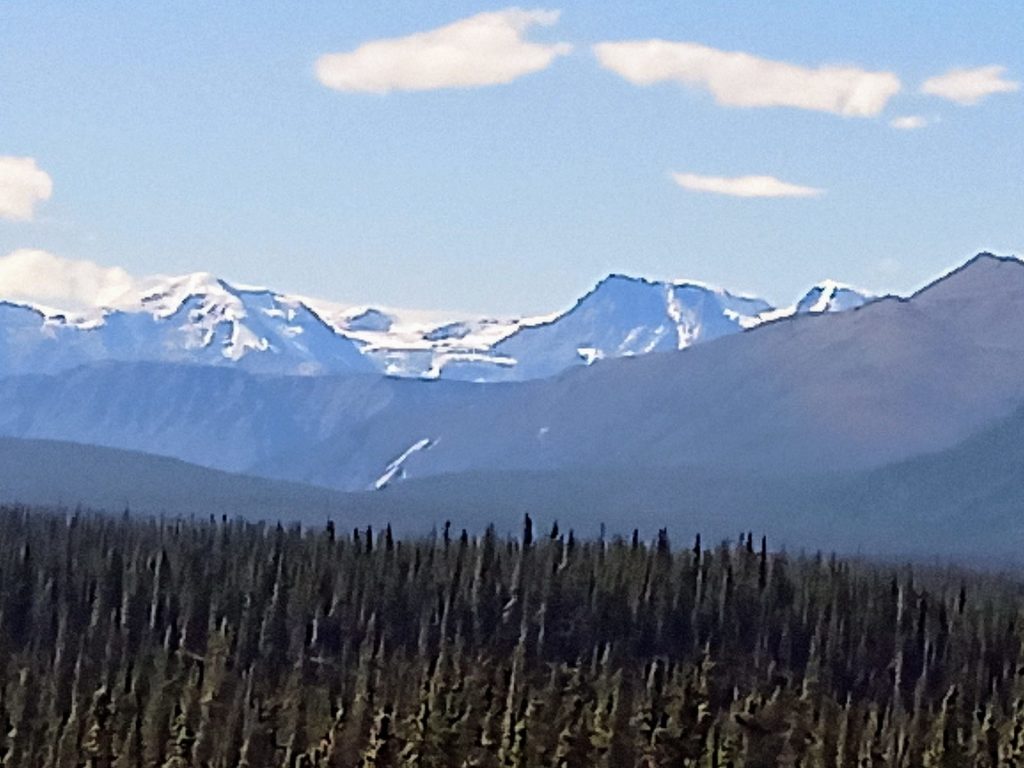
Day 18: August 19th
We started our day with a café latte at the Chilkoot Restaurant and Bakery, which also offered Thai dishes. It was already 11:00 am in Alaska, four hours behind Ontario. We enjoyed a delicious pad Thai with cashews and garlic, followed by an almond croissant for dessert. Our next stop was the quiet, small library in the middle of town, where we used the Wi-Fi to book our ferry to Skagway for the next day. Just a few feet away was the visitors’ center, which provided information on activities and attractions in and around Haines.
We decided to visit the Jilkaat Kwaan Heritage Center located on the same road we drove on yesterday. In addition to enjoying the scenic views in daylight, we also wanted to try the famous burgers at 33 Mile Roadhouse, further towards the border. The heritage center, situated between Haines Road and the border, showcases the history and artifacts of the Chilkat people, who once inhabited the area known as Eternal Village. When Alaska was sold to the US government, the villagers received around 980 acres out of the 365 million acres of Alaska. The area, rich in salmon, also boasts the highest population of bald eagles, which nest there. Two telescopes were set up and directed at a nest, allowing us to watch an eagle feeding. Along with tools, clothes, boats, and photographs of the villagers, a timeline of their history was displayed, including their long legal battle to reclaim these artifacts from a company that had taken them.
After our visit, we headed to the 33 Mile Roadhouse for a juicy burger that more than lived up to its reputation. A friendly white Labrador came over and lay down in front of us, asking for some attention. The restaurant was run by a thin woman with purple hair, who did everything—from taking orders and cooking to serving customers—and still found time for a small chat with us. The place was adorned with numerous signboards covering the walls and pillars, one of which caught our eye: “Free beer tomorrow.”
We drove back to Haines, stopping at scenic spots along the way, and realized how quickly time had passed. Eventually, we made our way to the Chilkoot State Park Campground, where we spent the evening and night.
Zulu the Bear:
While we were at the burger shop, we came across an article about a bear named Zulu who had been euthanized by the state. The article explained that many tourists and fishers often leave garbage behind, and when bears start associating food with humans, they can become very dangerous. The authorities decided to shoot the 2.5-year-old bear for safety reasons. The article emphasized the importance of tourists and locals being mindful of their behaviour to protect these beautiful animals, as once a bear begins to link humans with food, it often leads to tragic outcomes.
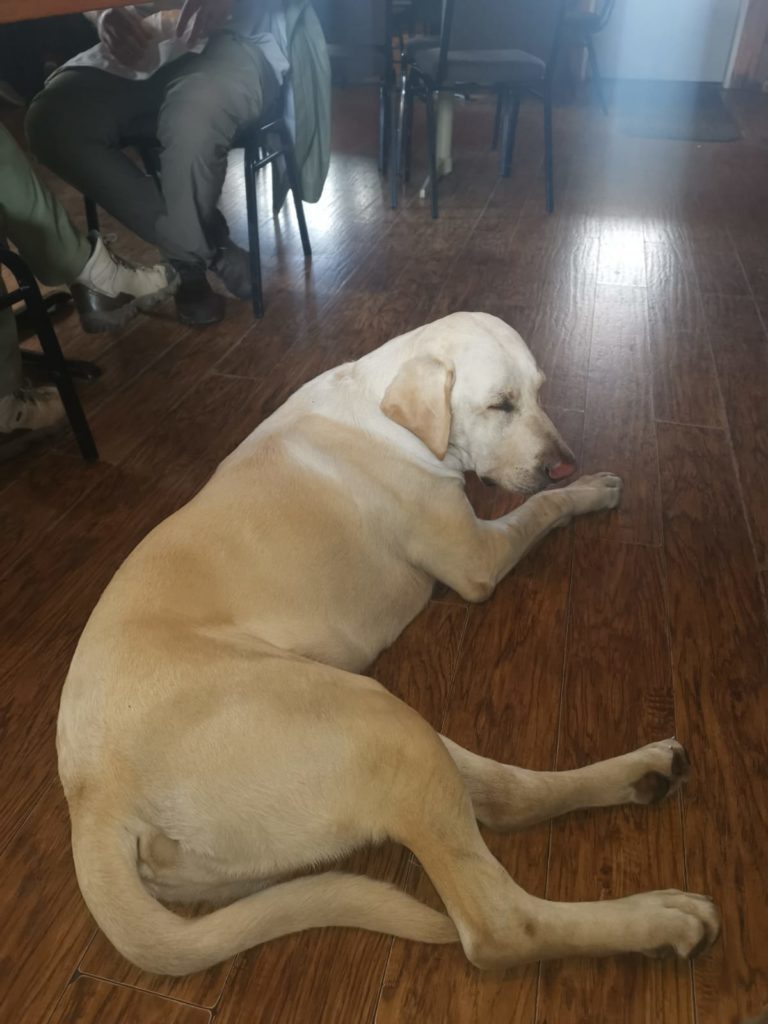


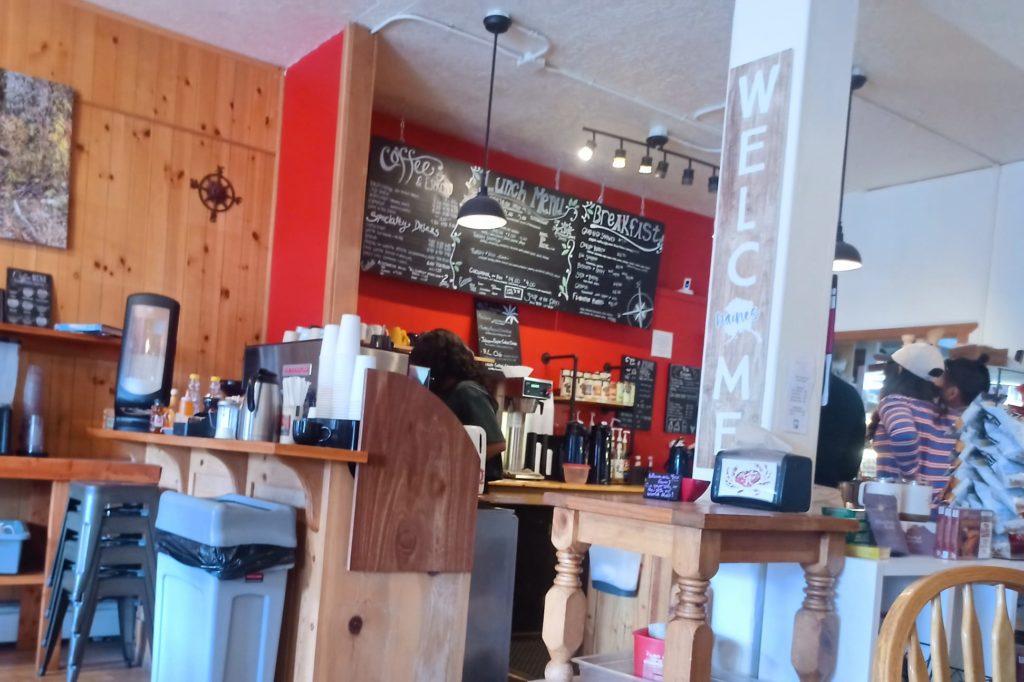

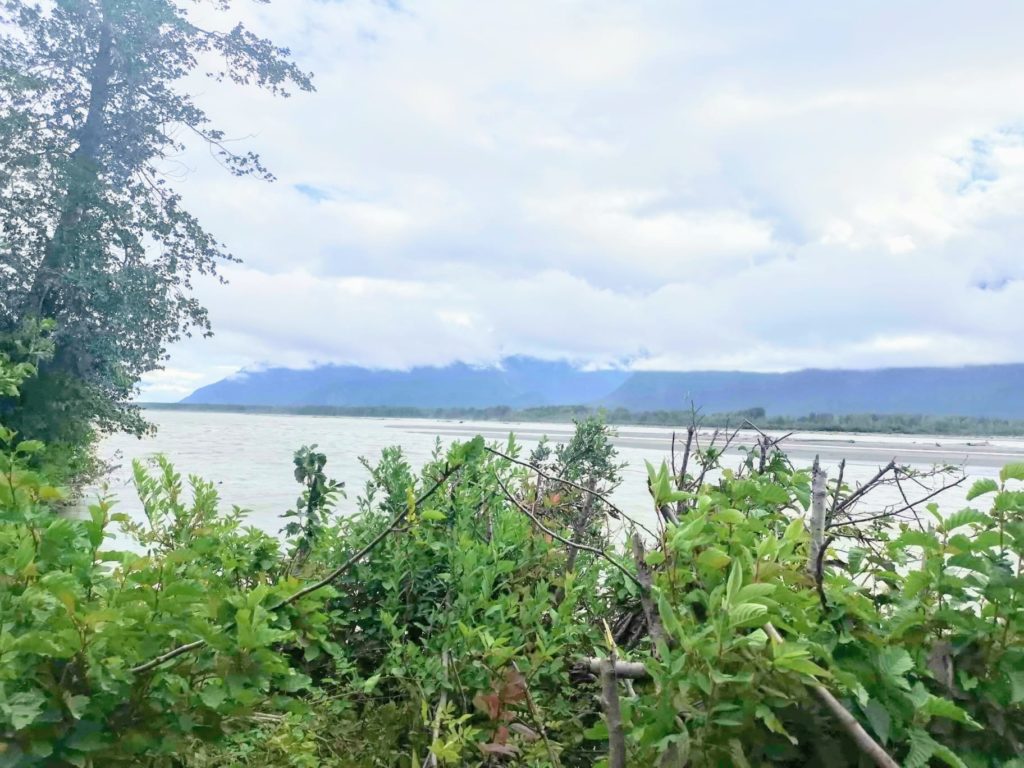


Day 19: August 20th
As we woke up, Chilkoot Lake was still in front of us, and a dip into the water was irresistible. A young woman from Whitehorse took a swim just a few meters away from us. Later, we ran into her again at the Rusty Compass Coffeehouse, a popular spot for young people and tourists. When we entered, all the tables were occupied, so we shared a table with someone else. We ordered café lattes and burrito wraps, which made for a perfect start to the day. Shortly after, we found ourselves alone at the table when an elderly woman and a middle-aged couple tried to settle at a nearby two-chair table. We offered them our table and moved to the smaller one.
As we were finishing our coffee, we noticed several people wearing “I voted” stickers. The elderly woman at our table was also wearing one and explained that she wore it to encourage others to vote, having already cast her own ballot. The other woman, originally from Haines, had moved to Kansas after marrying the man beside her, who smiled at us. He mentioned that there was a significant difference between the “Dems” and the Republicans, with the Democrats being supported by people in big cities and Hollywood, rather than by ordinary folks. He voiced concerns about the Democrats’ policies on oil extraction, which he believed were not in the best interest of Americans. The couple had come to Haines for early voting. Like many people we spoke with in Alaska, they were proud to be Americans and conservative, though they didn’t reveal who they had voted for.
We had already booked our ferry to Skagway, scheduled to depart at 12:45 pm, so we headed to the ferry terminal to get our tickets and wait. The ferry journey took us through a narrow passage surrounded by mountains, where we spotted various patterns, including one resembling a sitting dog. German kids were playing cards and chatting loudly nearby. As we entered the port of Skagway, we noticed several cruise ships docked, and tried to count the number of cabins, realizing that these ships could hold more people than live in our hometown of Pefferlaw, Ontario.
Skagway, a sibling city to Dawson City, was a hub during the Gold Rush era. When gold was discovered in Dawson City, people rushed north, passing through Skagway. The city’s theme revolved around gold, with many shops selling and buying it. The town was bustling with tourists, so we decided to leave and embark on the drive along the South Klondike Highway—the real reason for our detour through Haines and Skagway.
Before leaving, we stopped at the Happy Ending Saloon, near the railway station, for an Alaska special: fish and chips and a burger. The drive along the South Klondike Highway topped our must-do list, and despite the rain on the US side, it didn’t disappoint. Many tourist buses were driving in both directions, stopping frequently for photographs. When we reached the Canadian border, the officer asked us several questions about guns, purchases, etc. Our general “no” responses seemed to irritate him, but he eventually waved us through.
As we crossed into Yukon, we felt a sense of homecoming. Though the landscape between Yukon and Alaska shares similarities, Canada is a different country, and we were already in love with Yukon. The rain had stopped, and we had an easy drive to Whitehorse. It was a rainy and chilly day, so we headed straight to Takhini Hot Springs, located on the North Klondike Highway a few kilometers outside Whitehorse. We arrived around 7 pm and had until 11 pm to enjoy the hot springs, sauna, and relaxation room.
The hot springs complex felt more commercialized, catering to Whitehorse’s upper middle class, and couldn’t compare to the Liard Hot Springs. The water wasn’t truly hot but more like a warm bathtub, and the overall experience felt commercialized. Despite paying $70, the sauna was cold, the steam sauna lacked steam, and the showers had cold water with minimal flow. We weren’t allowed to bring our own drinks or soaps. Compared to the Liard Hot Springs, which had a $5 entrance fee, it was a disappointment. People were also talking loudly in the quiet zone.
Despite these drawbacks, we left feeling refreshed and made our way to bed, ready for the next adventure.
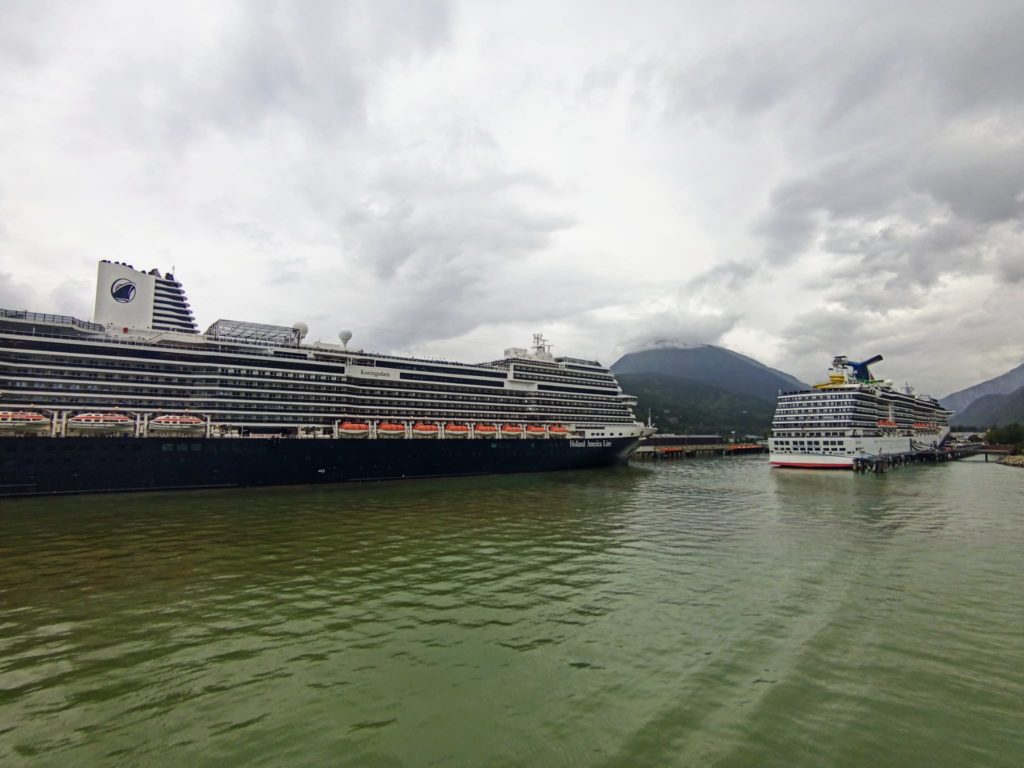

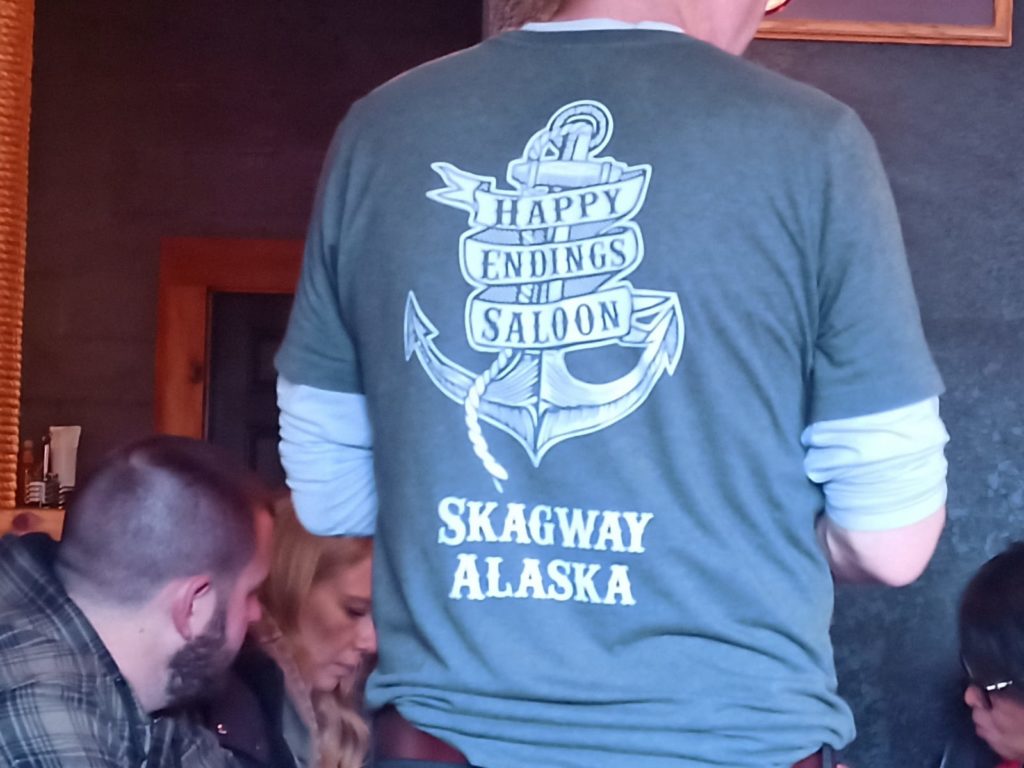


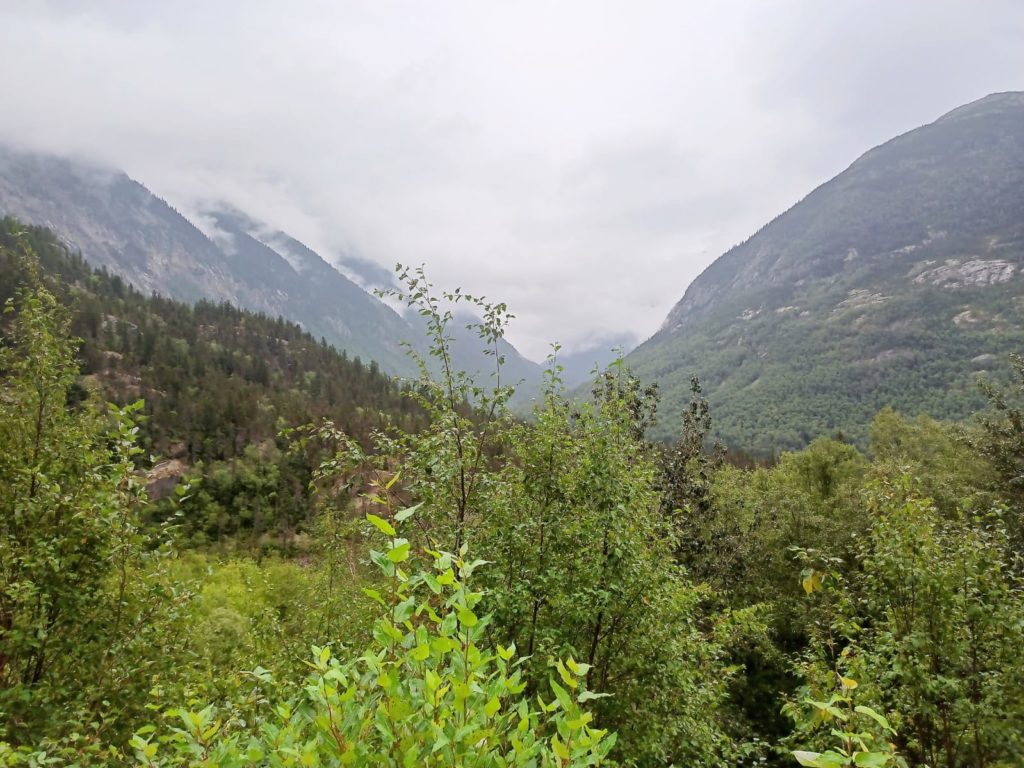
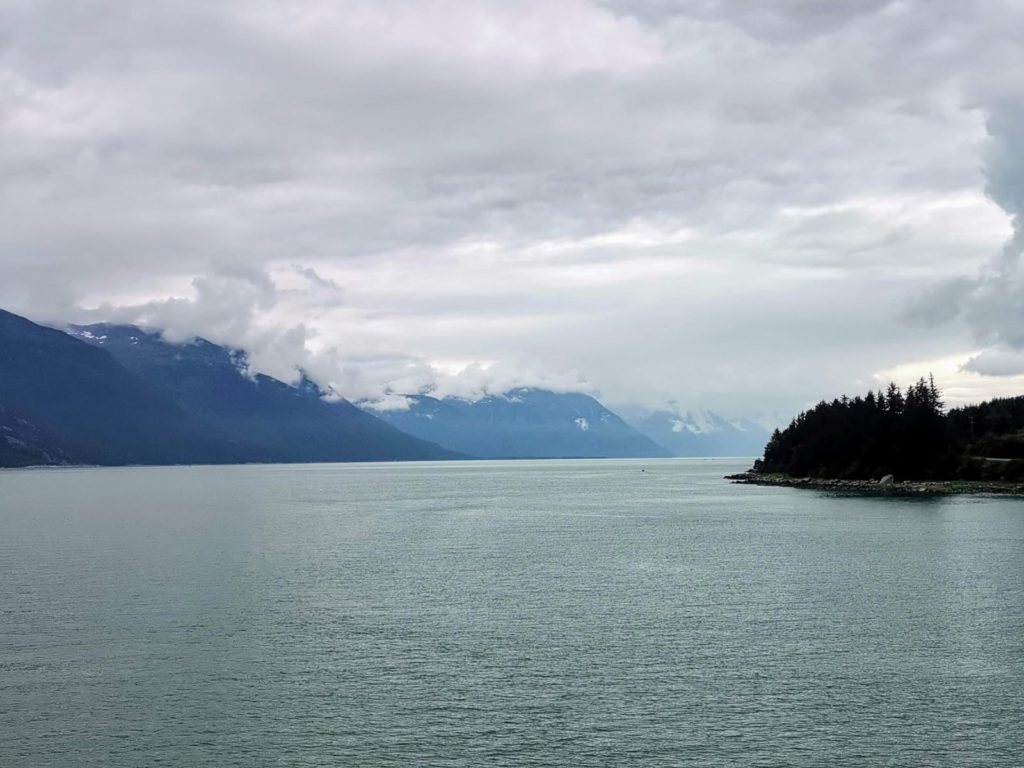

Day 20: August 21st
The last two and a half weeks had been so eventful that it felt like we had been on the road for a long time. The early days of our journey seemed like a distant memory. Our destinations, Tuktoyaktuk and Yukon, were now behind us, and it was time to head home. Before leaving Yukon, we took our car to Jiffy Lube in Whitehorse for an oil change. Arriving before the shop opened, we grabbed coffee and breakfast at the nearby Tim Hortons, conveniently located in the same square. We opted for the ultimate package, which included synthetic oil and a thorough maintenance check. With our car in top condition, we left the shop with peace of mind, grateful for how it had carried us across vast distances, served as our shelter, and stored our belongings over the last 19 days. We had already driven 8,800 km.
After an hour spent doing laundry, it was time to turn our attention to the journey home to Ontario. We hadn’t settled on a specific route yet. We could either retrace our steps or explore new paths. In 2014, we drove the Trans-Canada Highway and returned via Highway 90, so one idea was to drive to Washington through Kelowna, BC, then head to Glacier National Park in Montana, and explore other Northwestern US states. While we hadn’t made up our minds, we decided to take Highway 37 just before Watson Lake and journey through British Columbia.
With fresh oil, the car purred smoothly as we drove along the Alaska Highway toward Watson Lake, savouring the scenery from a new perspective. It felt like savouring the last drop of a delicious drink. We made a stop at the Nugget Campground, where we had stayed 15 days ago, enjoying a café latte and snacks. There, we noticed many boards where cyclists from various countries had recorded their origins, destinations, names, and dates. The most recent entry was from someone from Berlin, just the day before.
As we transitioned onto Highway 37, we were greeted by a beautiful British Columbia signboard, but the next stretch of road painted a starkly different picture. Both sides of the road were lined with burnt pine trees and bushes, a scene that lingered longer than we would have liked. The narrow, winding road was often bumpy, with many hills and curves that required careful driving. Despite speed limits of up to 80 km/h in some areas, we frequently had to slow down or brake.
When we arrived at Jade City, we were delighted to find a campground with Wi-Fi and coffee—all free of charge. Deciding to spend the night there, we explored the area, which belonged to a mining family and featured a store displaying various stones. We amused ourselves by playing with the abandoned mining machinery and ended the day with a glass of wine atop a bulldozer. As darkness fell, we made our way to bed, ready for whatever adventures the next day would bring

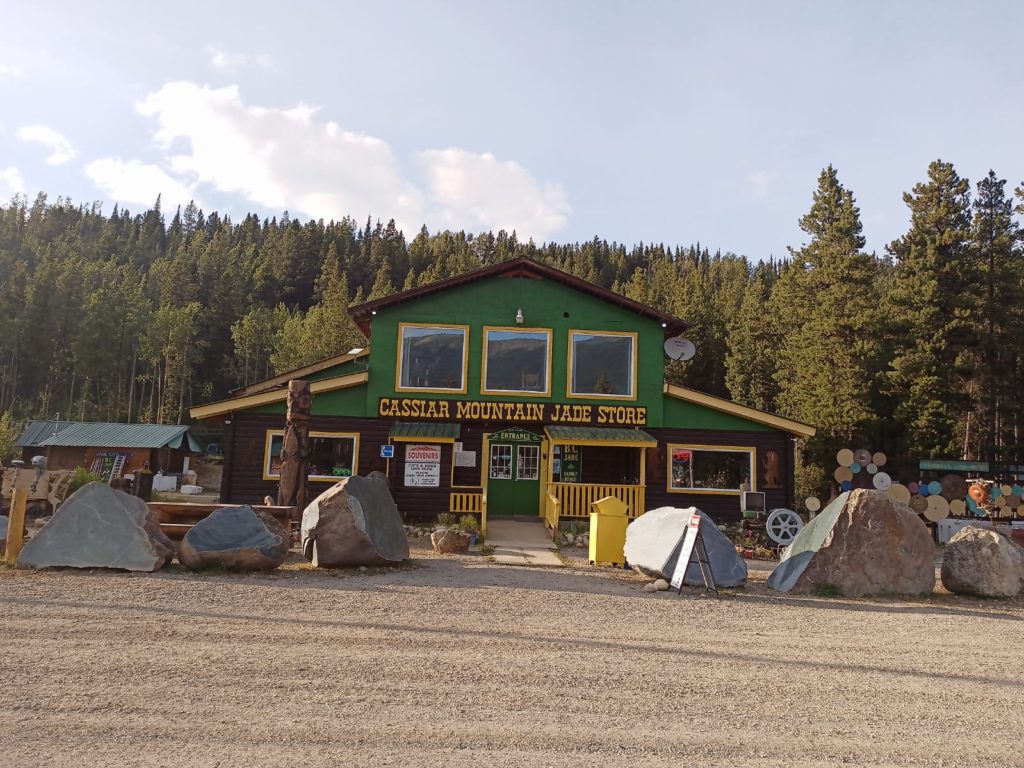

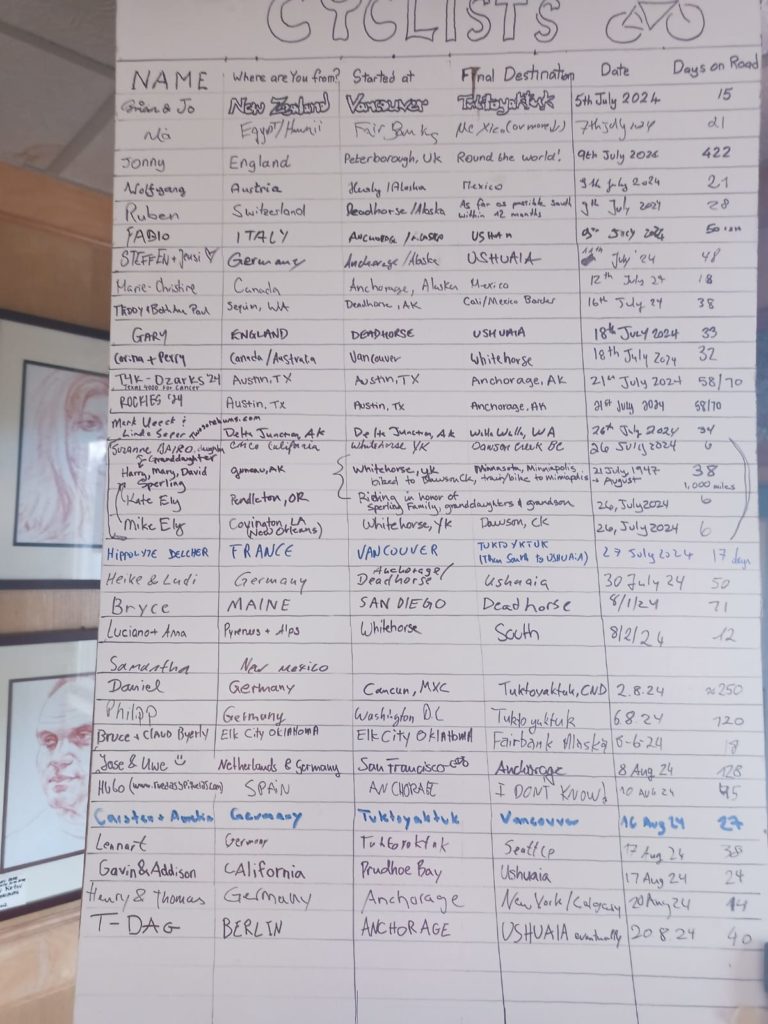
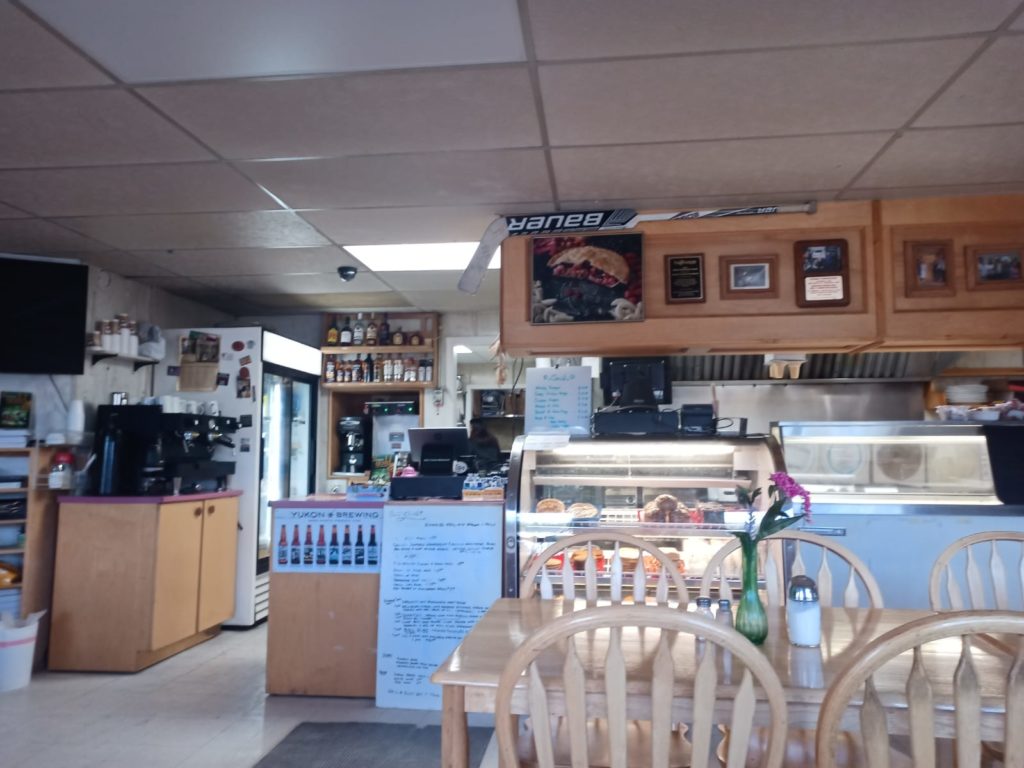
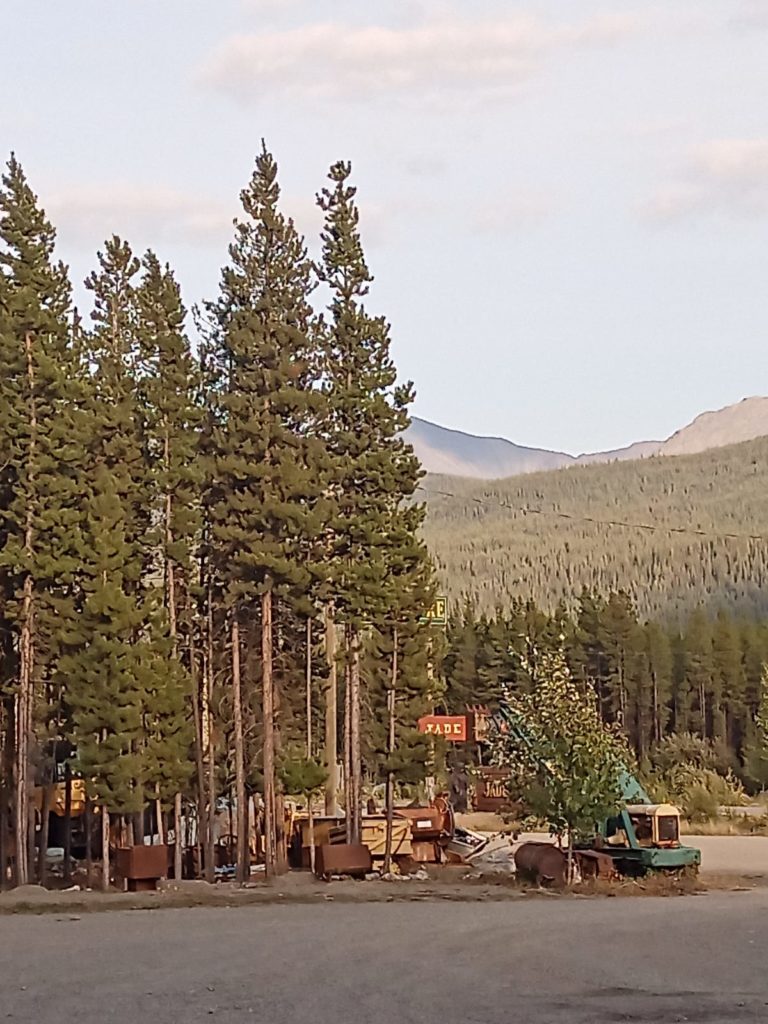
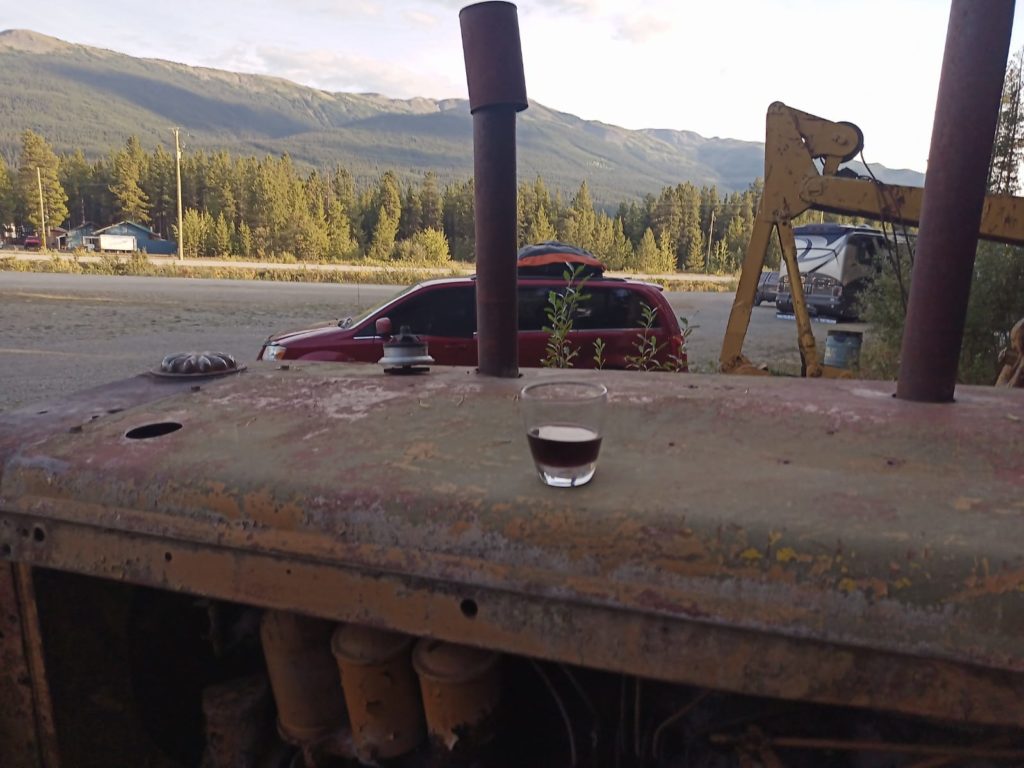
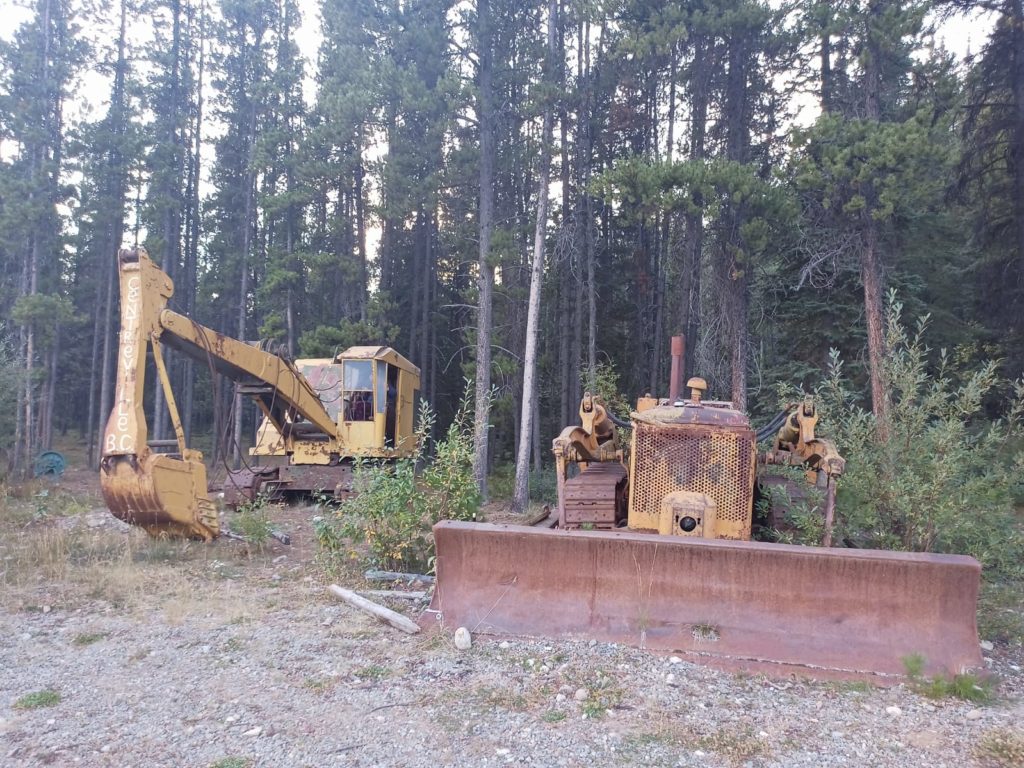
Well that was a whole lot of days of adventure I must say. Happy your car is holding up. Imagine no charge for the help of fixing it. So cool. Loved the stories and beautiful pictures.
Though the car gives some trouble, Haines & Skagway trip is another milestone.
Congrats, Drive safe
Day 18 was awesome, beautiful photos. 👌
Needless say, we were in Skagway Alaska on August 28th 2023. (Exactly year ago via cruise)
We took the train to White Pass Summit at Canadian border (BC) , and came back.
It was a beautiful scenic trip from 30ft to 3000 ft elevation.
Skagway is an amazing town, just 1100 people live there.
During summer, 2500 seasonal workers come there to cater cruise travelers.
Glad, that you have visited Skagway.
Drive Safe, Have fun & Enjoy